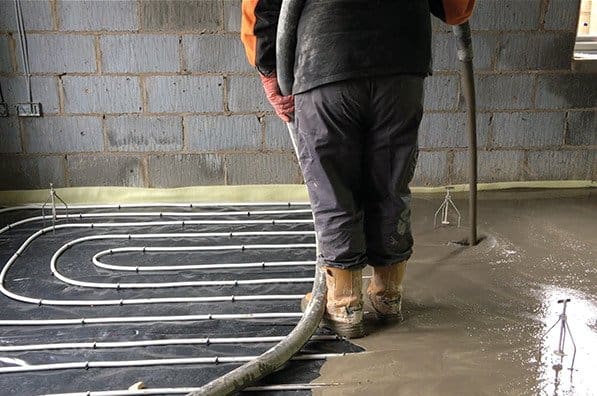
What is Screed Underfloor Heating?
Screed Underfloor heating systems consist of pipe buried in inches of screed. This leads to long warm up and cool down times. Due to low controllability they’re most suited to large commercial areas; providing low level background heat.
Water piping is fixed to the building’s base insulation. Screed (cement) is then poured on top. It can take up to 80 days for a screed to dry and cure, ready for use. The pipes heat the screed, the screed heats the floor and the room.
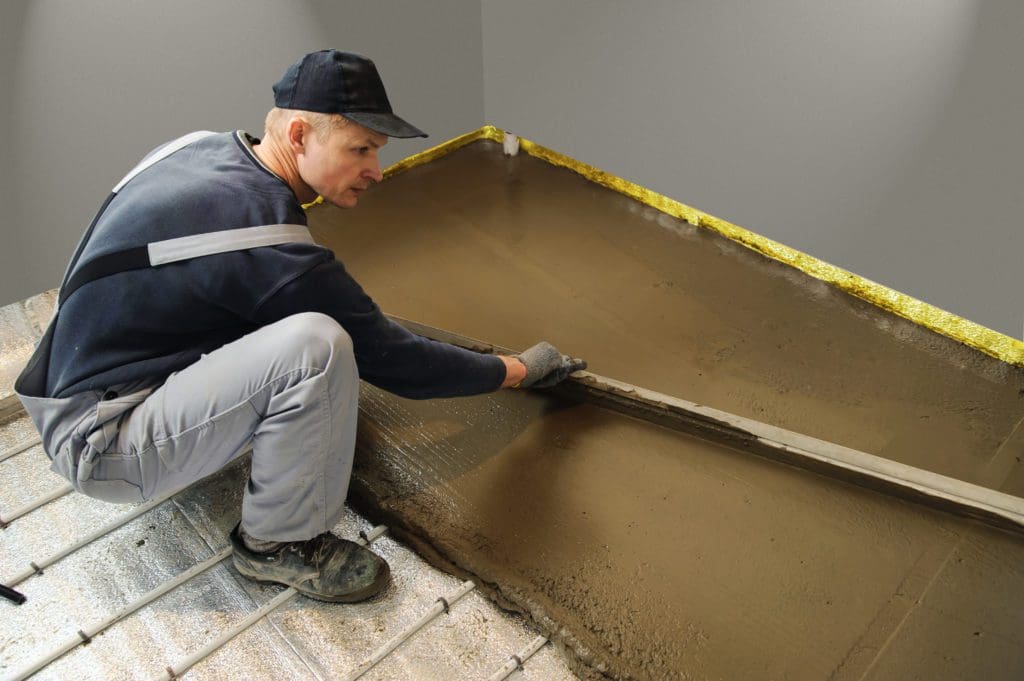
Screed Underfloor Heating Considerations
There are some reasons why this system is not practical in domestic homes.
A room takes hours to warm up and cool down. Cool down times are essential in insulated new builds. When a room becomes too warm, screed takes hours to cool down. Slow temperature changes require users to change their heating habits. Resulting in it being an impractical solution for most domestic situations.
Installation process. In a renovation, it is a lot of hassle and time to dig up the floor and re-pour screed.
If controllability and easy install is important for you, please check out our:

Leak proof pipes
No joins under the floor and 100% leak proof pipe.

Low maintenance
Very low maintenance and reliably consistent, it just works!

Compatible with all boilers
Compatible with any heat source, including future heat pumps.
3 Steps to Comfort...

Get a free estimate
Send your plans or dimensions for a free no obligation estimate

Design your system and install
Place a small refundable deposit for a custom designed, highly efficient UFH system. Our 5-star Customer Care team are here 6 days a week to help you or your installer during and long after the install.

Enjoy your floor heating!
Sit back and enjoy luxury comfort, lower heating bills and furnish your home with freedom with 15% more usable space!

High-Efficiency System Design
Wunda is renowned for its high-efficiency underfloor heating system designs. With a deep understanding of heating technology and a commitment to innovation, Wunda consistently delivers cutting-edge solutions that provide optimal comfort and energy efficiency.
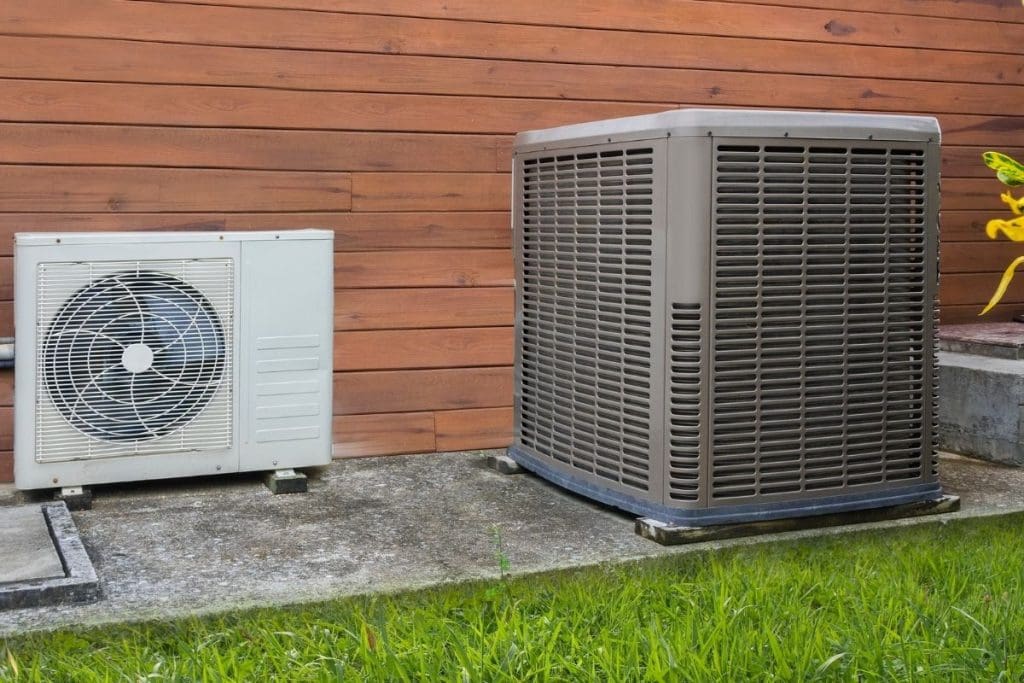
Underfloor Heating Efficiency and Heat Sources
Water Underfloor heating systems will give the most efficient results from any heat source. Due to less energy being used to produce low water temperatures 35-45°C. Perfect for any boiler or Ground Source or Air Source Heat Pump.
Save on your heating bills, Control your comfort & Future proof your home.
Screed Floor Fixings
Wunda’s pressurised leak proof pipe can be secured to the insulation using a variety of fixing methods, some installers prefer to staple over the pipe into the insulation (left), others find the self-adhering clip tracks most efficient (centre), and others prefer to fit the pipe into castellated pipe tray. The choice between options is installer preference.
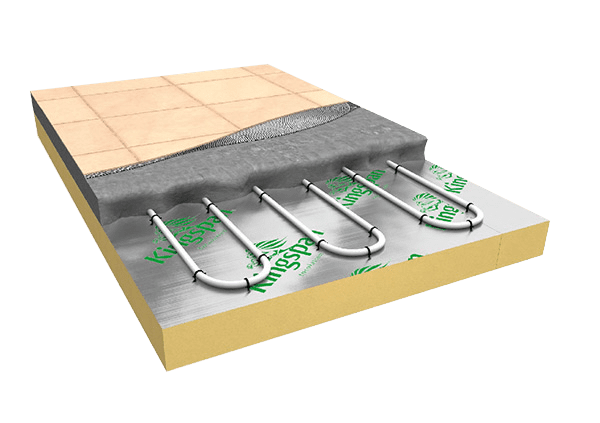
Pipe staples
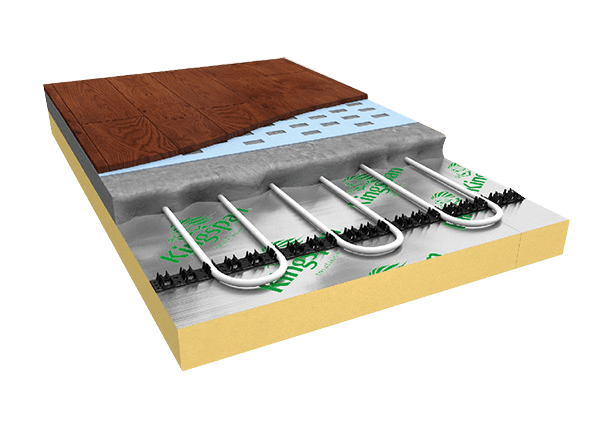
Clip tracks
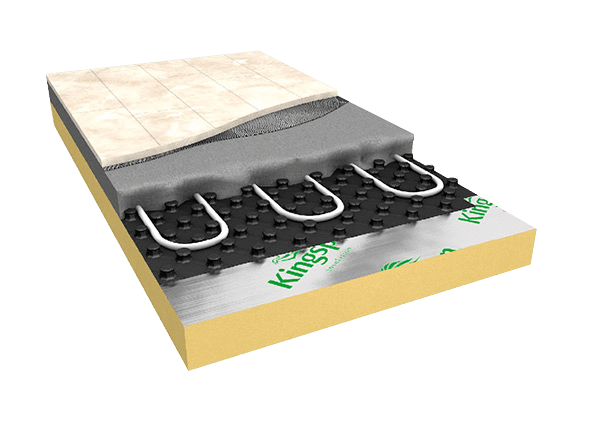
Castellated panels
When using screed, floor heating pipes are fixed on top of insulation. the screed then encases the pipes. After up to 80 days of curing the screed is set. Heat can then be applied to the screed. The heat passes through the floor finish and gently dissipates into the room. Given that optimal pipe centres are used, floor heating is very economical using input temperatures between 30-50°C
Sand and Cement and Chemical Screed
Screed is a levelling compound typically comprised of sand and cement or anhydrite chemicals. Once set and dried, heat can be introduced to the system gently.
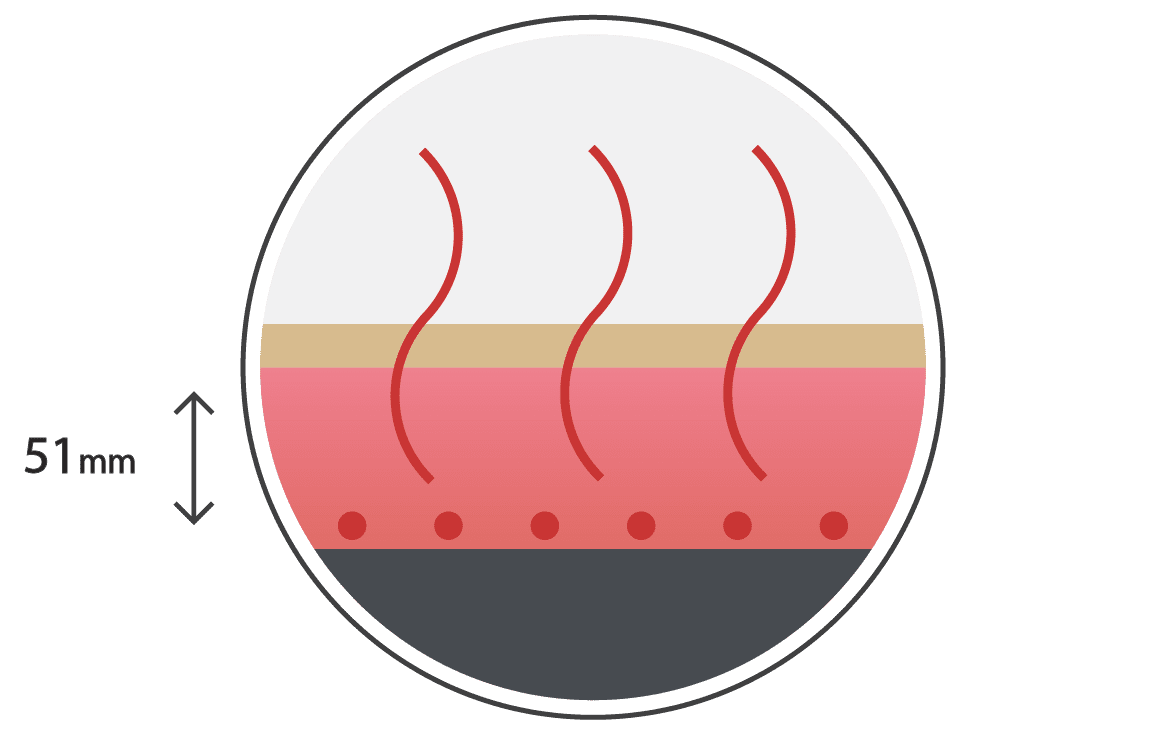
Chemical Screed
The thermal mass of all screeds make it difficult to quickly adjust temperatures with some taking hours to cool down. Chemical Screeds can use a shallow amount of screed of around 51mm allowing it to set quicker reducing install time, and enabling it to heat quicker than traditional sand & cement screed
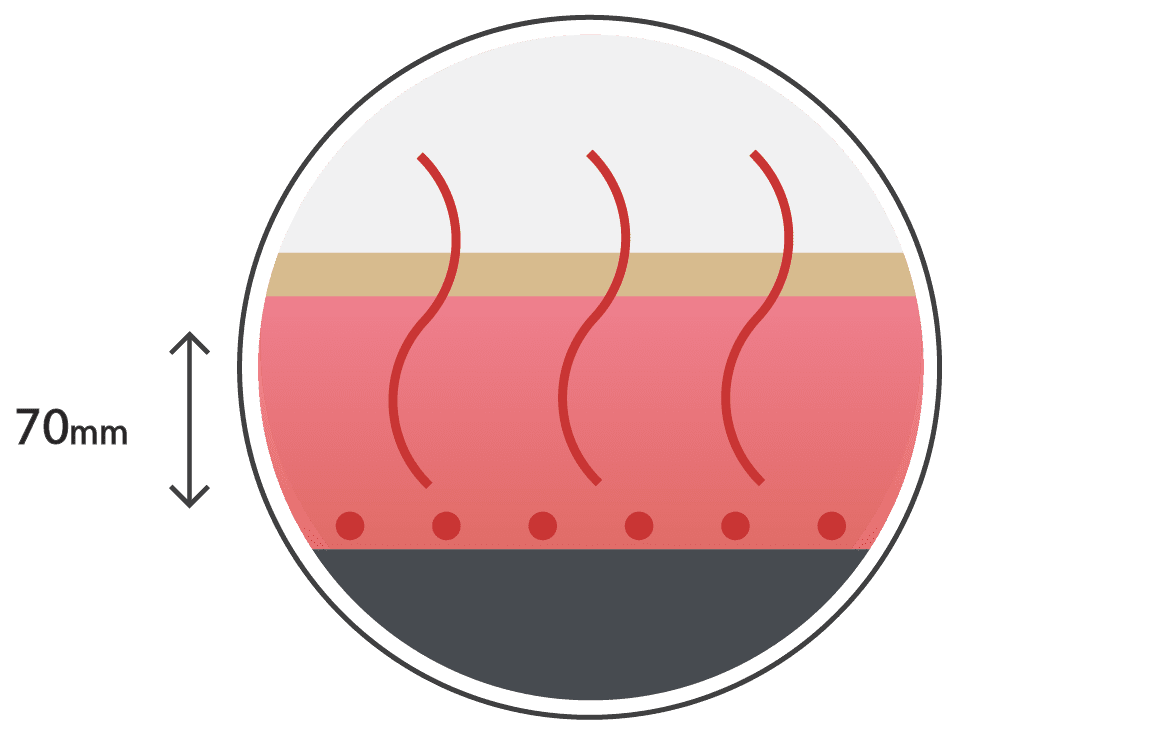
Sand & Cement Screed
The minimum sand and cement screed that can be used is around 70mm. This will take longer to set than a chemical screed
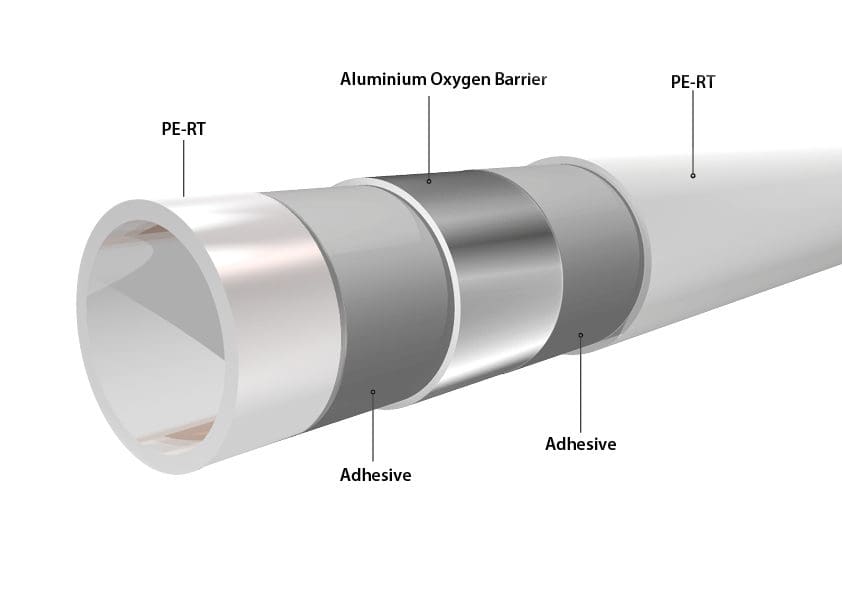
PERT / AL / PERT Pipe
Available in 16mm or 12mm to fit your desired solution, featuring an oxygen barrier for increased lifetime and aluminium core for greater thermal conductivity.
Compare systems
Not sure which UFH system is right for your upcoming project? Compare the differences below
| Screed | Rapid Response® | Joist | |
| Extensions | |||
| New builds | |||
| Renovations | |||
| No need to dig up floors | – | – | |
| Fast heat up time | – | – |
Your Screed System Questions
Screed systems are traditionally used in new build projects. Screed systems require the floor heating pipes to be fixed to the sub floor insulation layer prior to being encased in a layer of concrete or chemical screed. The warm water in the pipes heat up the concrete (screed) which acts as a thermal store and radiates it into the living space. This process can take a few hours to both heat up and cool down and is less controllable than overfloor systems.
Got a question or need some help?
Visit our support hub for FAQs, How-to videos or to contact one of our experts.
